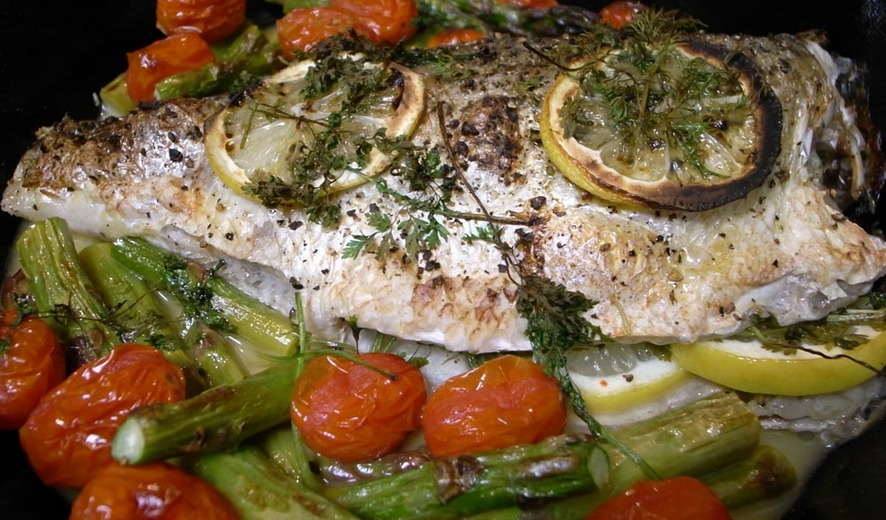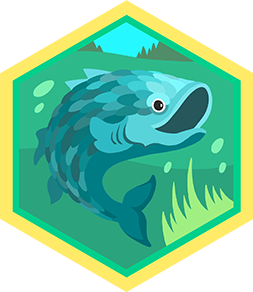Eat what you catch
Catch small freshwater fish with a net, clean and cook them with an adult, and learn basic fishing, food safety, and simple cooking skills.



Step-by-step guide to eat what you catch
How To Teach A Kid To Fish For The First Time
Step 1
Ask an adult to check local fishing rules and get permission before you go.
Step 2
Put on your life jacket so you stay safe near the water.
Step 3
Walk to the fishing spot with the adult and stay where the adult says is safe.
Step 4
Use your net to scoop small freshwater fish in shallow water.
Step 5
Place each caught fish into the cooler with ice to keep it fresh.
Step 6
Ask the adult to check the fish species and size to decide which fish you may keep.
Step 7
Wash your hands with soap and water before you start cleaning fish.
Step 8
Set up a clean cutting board and lay out paper towels in a well-lit area.
Step 9
Scrape the fish from tail to head with a spoon or scaler to remove the scales while the adult holds the fish steady.
Step 10
Help the adult scoop out the innards with a spoon while the adult carefully opens the belly.
Step 11
Rinse the cleaned fish under cool running water to remove blood and loose bits.
Step 12
Lightly coat the fish with a little cooking oil and season with salt and pepper.
Step 13
With the adult, cook the fish in a hot pan or on a grill until the flesh is opaque and flakes easily with a fork.
Step 14
Let the cooked fish cool a little then taste your catch with the adult.
Step 15
Share a photo and story of your finished catch and meal on DIY.org.
Final steps
You're almost there! Complete all the steps, bring your creation to life, post it, and conquer the challenge!


Help!?
What can we use if we can't find a small fishing net, life jacket, or cooler with ice?
If you don't have the small net from the instructions, borrow a landing or fine‑mesh beach net from a local tackle shop; if a life jacket is hard to find, borrow a properly sized US Coast Guard–approved PFD from a marina or rental center; and instead of a full cooler with ice you can use an insulated lunchbox with frozen ice packs to follow the step 'Place each caught fish into the cooler with ice'.
The fish keep slipping when we try to scrape scales or scoop out the innards—how can we make the steps easier?
To prevent slipping during 'Scrape the fish from tail to head with a spoon or scaler' and when helping the adult 'scoop out the innards', have the adult hold the fish steady, grip it with a folded paper towel for traction, and keep the fish chilled on ice from the cooler to firm the flesh.
How should we change the activity for younger children versus older kids?
For toddlers let them wear the life jacket, watch safely, and take photos; for school‑age kids let them 'Use your net to scoop small freshwater fish' and 'Place each caught fish into the cooler with ice' with supervision; and for teens let them assist with 'scrape the fish' and help 'cook the fish in a hot pan or on a grill' under the adult's close guidance.
What are some ways to extend or personalize the activity after cooking and tasting the fish?
After you 'Let the cooked fish cool a little then taste your catch with the adult' and 'Share a photo and story of your finished catch and meal on DIY.org,' create a fishing log of species and sizes checked by the adult, experiment with different seasonings or a lemon‑herb sauce before cooking on the pan or grill, and decorate a serving plate to personalize the meal.
Watch videos on how to eat what you catch
Teaching A TODDLER How To Fish?! Tips & Tricks For Fishing With Kids
Facts about fishing and outdoor cooking for kids
🕸️ A soft landing net helps protect small fish and makes catching and releasing easier for kids learning to fish.
🧊 Keep caught fish cold (below 40°F / 4°C) right away — chilling slows bacteria and keeps your meal safe.
🐟 More than 15,000 kinds of freshwater fish live in rivers and lakes — some are tiny enough to fit on a fingernail!
🎣 People have been fishing for thousands of years — archaeologists have found ancient fishhooks used tens of thousands of years ago.
🍳 With an adult's help, small whole freshwater fish can be cleaned and pan-fried in about 7–10 minutes for a quick, tasty dinner.
How do you teach a child to catch and cook small freshwater fish safely?
What materials and equipment do we need to catch, clean, and cook small freshwater fish with kids?
What ages is this catch-and-cook activity suitable for?
What are the benefits and safety tips for kids who catch and cook their own fish?


One subscription, many ways to play and learn.
Only $6.99 after trial. No credit card required



